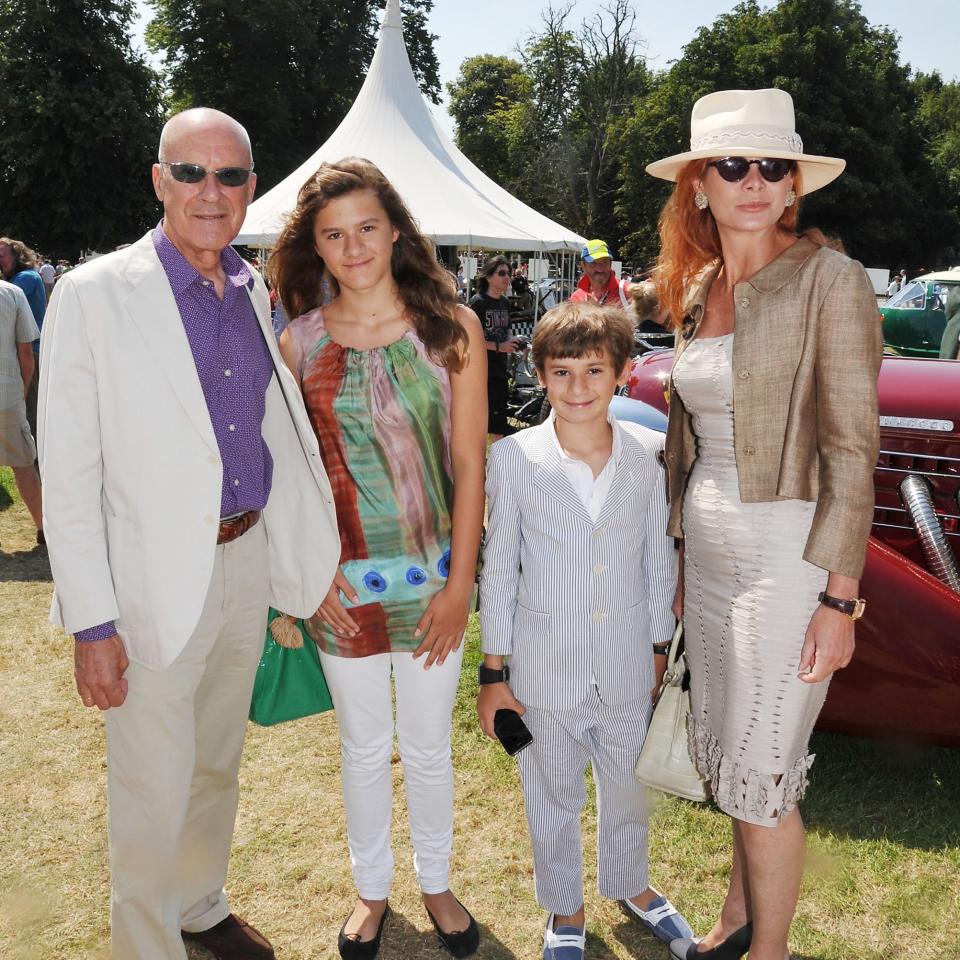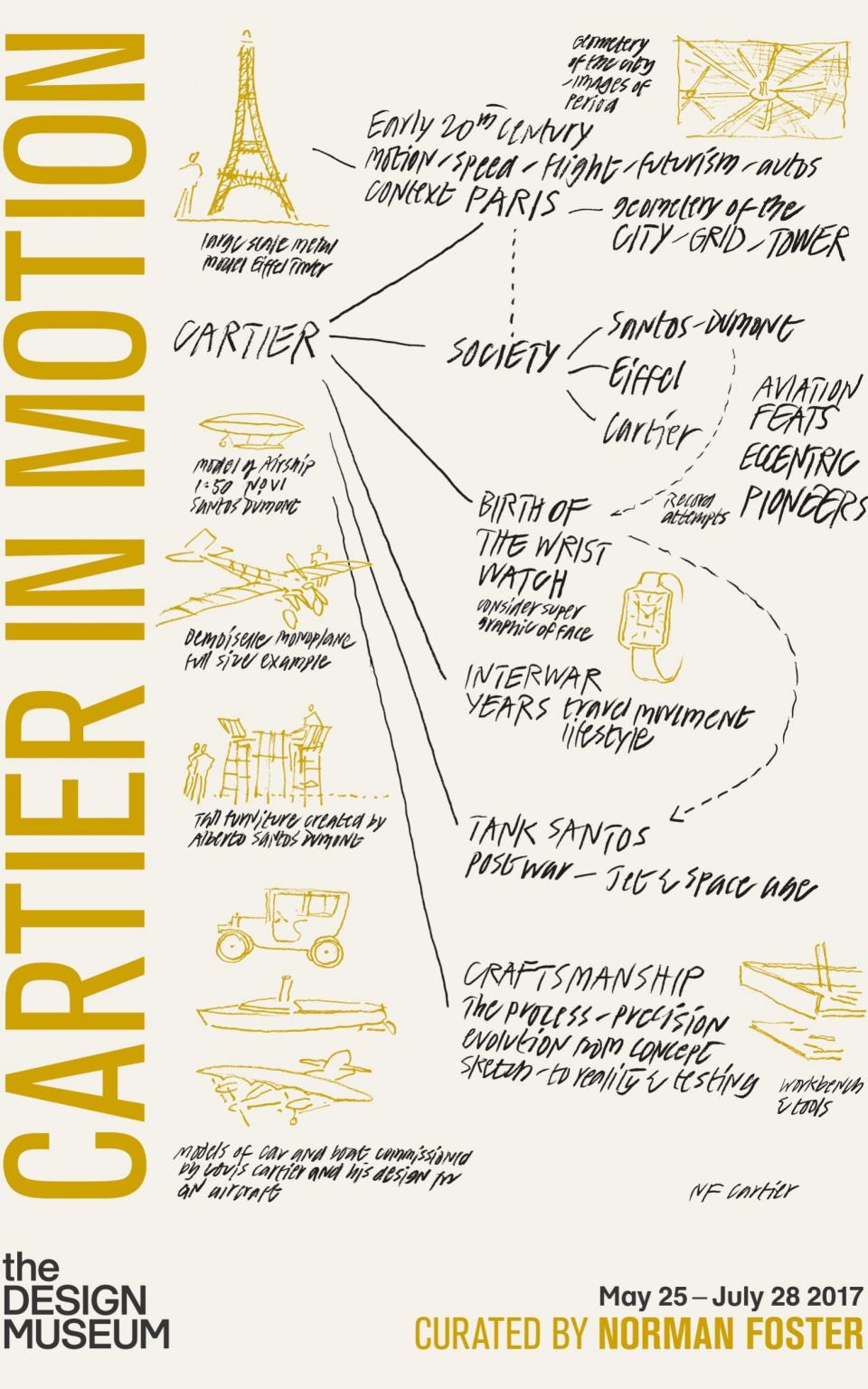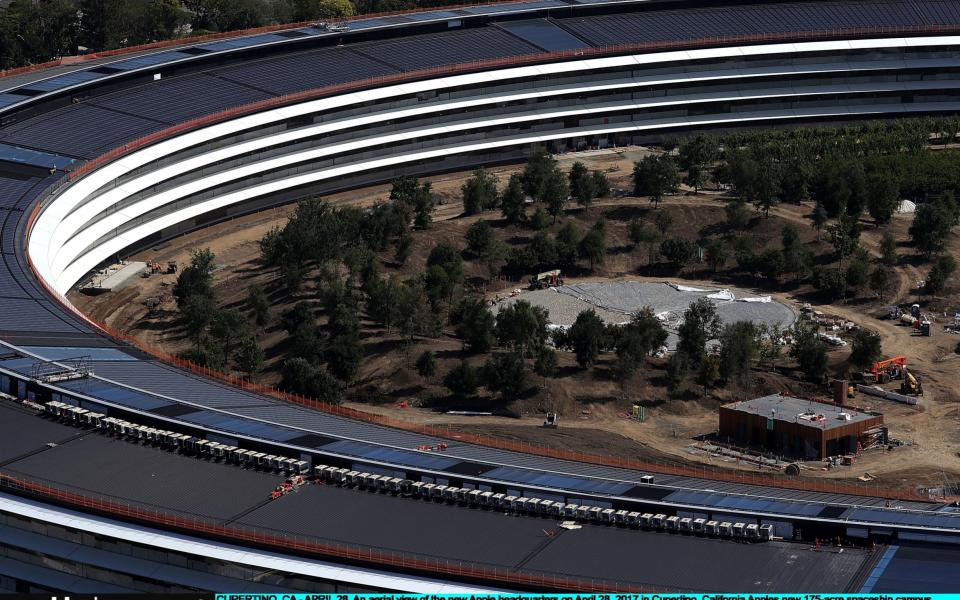Lord Foster: 'I’m like a hamster on a treadmill. I’m always moving, I never stop”

For a literal snapshot of the life of Norman Foster, you have only to look at Instagram, which the 81-year-old joined in January. Here, he can be found cycling down the walkway that spirals around the glass dome he created for Berlin’s Reichstag building; demonstrating an airport design to Mexico’s president, Enrique Pena Nieto; trying his hand at watchmaking at the Swiss workshops of Cartier; or – just to rub in the sense of underachievement his 40,000 followers must surely suffer – competing in a cross-country skiing marathon in the Swiss Alps (“45 minutes faster than last year”, his caption proudly notes).
A post shared by Norman Robert Foster (@officialnormanfoster) on May 17, 2017 at 4:07am PDT
It was the architect’s 15-year-old son, Eduardo, who chivvied him into taking to social media. “He pointed out there were so many people out there pretending to be me anyway, that I should probably just do it,” Foster explains. “I confess to being old fashioned about these things, but I’m fascinated by discovering it.”
Cyber impersonation is one of the quirkier corollaries of life as one of the architecture's true superstars, and Foster counts himself fortunate to have teenage children – he also has an 18-year-old daughter, Paola, with his third wife, Spanish art curator Elena Ochoa-Foster, whom he married in 1996 – to lead him through social media’s rigmaroles.

There’s little else old-fashioned about him. From the work his practice takes on, recently winning an award from NASA for a scheme to 3D-print dwellings on Mars, for instance, to a punishing lifestyle that means he rarely spends more than two or three days in one place, his energy is, he says, directed permanently forwards.
Dressed elegantly in the international uniform of architects - black polo neck and slacks - and fidgeting constantly in his chair as he warms to his themes, he seems far younger than his 81 years. Having seen off both bowel cancer and a heart attack, his energy is remarkable.
“I’m like a hamster on a treadmill,” he says cheerfully. “I’m always moving, I never stop – I couldn’t.”

Foster, the creative force behind such burnished British landmarks as the Gherkin, Sage Gateshead and the Millenium Bridge, has left an unprecedented imprint around the world; his hits including the majestic Milau Viaduct in southern France, the geometric eruption of New York’s Hearst Tower, and Hong Kong’s airport, a project that involved flattening a mountain and creating an island bigger than Heathrow.
He seems to think, live and work on the grandest of scales. Concepts and visions – on infrastructure, planning densities, on turning landfill into energy – tumble from him as though from a tap; ask him about his lunch, and he’ll be onto the wealth-spreading potential of connectivity in no time.
Even his formal title, Baron Foster of Thames Bank, has a sense of the wide-screen, conjuring the riverside vista that’s home to his firm’s cavernous Battersea offices. When we meet there, however, it’s to discuss something that for once involves design at the smaller scale: an exhibition highlighting the evolution of iconic wristwatch designs from Cartier, which Foster has curated and designed, and opens at London’s Design Museum on Thursday.

If it seems an unlikely diversion, it did to Foster, too, when Cartier approached him - until his research took him in intriguing directions. He found himself captivated by the creative hotbed of early-20th century Paris, from which the Parisian jeweller’s original, ground-breaking designs emerged.
It was a world populated by the kind of visionaries Foster naturally lionises: Gustave Eiffel, Louis Cartier and the glamorous early aviator Alberto Santos-Dumont, for whom Cartier created the world’s first wristwatch in 1907.
“This kind of transition period fascinates me, and I rather enjoyed the chance to rummage through history,” Foster says, casting his gaze over an expansive diagram of 20th century design that he assembled for the task; watches, it seems, became one more jumping-off point for his unfettered curiosity.
There’s no conflict in going right down to the scale of a watch – I’m equally obsessed by a door handle, something you can touch, as I am about an internal space or a building. It’s the curiosity around how something works
Lord Foster
“There are sections on the influence of the city, the nobility of making and craftsmanship. For me, there’s no conflict in going right down to the scale of a watch – I’m equally obsessed by a door handle, something you can touch, as I am about an internal space or a building. It’s the curiosity around how something works.”
It was in another great transition period, that of post-war Britain, that Norman Foster’s enquiring spirit was first galvanized - in Manchester, the city that today occupies the headlines for the most tragic of reasons, but for which architecture proved a most powerful symbol of defiance when it was last targeted by terrorists, 21 years ago.
His father worked for the local engineering powerhouse, Metropolitan-Vickers and, fascinated by architecture from a young age, Lord Foster would borrow books about buildings from the school library; to this day, is never without his sketchbook.

At 16, he left school and took a job as a clerk at Manchester Town Hall, taking off through the city on his bicycle in his free time. “I absorbed architecture in my lunch breaks by travelling around Manchester,” he says, citing the modernist slab of Kendal’s department store (now House of Fraser) as an old favourite.
“It was a stimulating time. It was a period of austerity, but also of extraordinary achievements and optimism. You had the early days of the jet aircraft, the Comet, the Vulcan bomber, the transition from steam to diesel, the Festival of Britain in 1951.”
I find looking back very difficult. I just feel more comfortable looking forward
Lord Foster
Foster served as a radar technician in the RAF for his National Service, before gaining an architecture diploma, funded “by a combination of manual work and scholarships”. What would the young lad from Manchester have made of the spectacular career that followed - his latest distinction being receiving the Freedom of the City of London, presented at a private ceremony last month. He hesitates. “I find looking back very difficult,” he says. “I just feel more comfortable looking forward.”

He’s even set up a Madrid-based not-for-profit, the Norman Foster Foundation, for that purpose. “Its mission is anticipating the future, breaking down barriers between disciplines in a quest to improve life,” he says.
Nowhere in Foster’s work is that lofty ambition more noticeably realised than in one of the most significant new buildings in the world: Apple’s fantastical new workspace, that has been gradually opening in Cupertino, California, during the spring.
In Foster’s office, a detailed model of the new Apple Park sprawls across several tables. At its heart stands an enormous circular spaceship of a building, just four storeys tall, which will house 16,000 employees, while opening them out onto a verdant Californian landscape.

Built at a rumoured cost of $5 billion, it might be seen as something of a crowning glory for Foster – and his ideal that “a workspace should be about a lifestyle, not about work” – were it not for his insistence that the vision is that of Steve Jobs, more than it is his.
“It’s kind of utopian,” Foster says of this low-rise pleasure park (his term), where exterior and interior elide. “Steve’s idea of a meeting was to go for a walk, and there’s five miles of trails for hiking and cycling. It harks back to Capability Brown, and to the Californian landscape of the past – what Steve called the fruit bowl of his youth.”
Even the Cartier exhibition has inspired an adventure in innovation and design: adapting the Design Museum’s unpromising meeting rooms as an exhibition space has prompted the inventionof a new style of self-powered, modular display for assembling anywhere.
“It’s totally autonomous, flexible and unlimited in its possibilities,” he beams, and he might be describing any of his vast projects, rather than a display case for a watch.
Cartier in Motion opens at the Design Museum Thursday 25 May, until 28 July.


